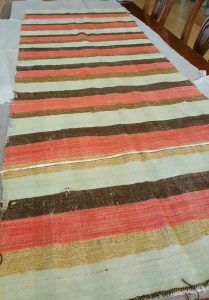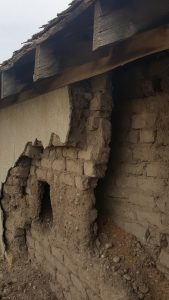Fall has certainly made its appearance here in the San Luis Valley this past week. Snow already caps the mountains on all sides of us and the several straight days of chilly rain certainly had me pulling out my heavier coat and building a fire in the stove. It got me thinking, what have people before me done in the fall? Having lived in the world’s largest alpine valley for most of my life, I know that winter is never easy here. How did the early people who we know utilized the valley 100’s and 1000’s of years ago handle the harsh realities of winter near the mountains? Well I did a little digging around and this is what I found out:
The San Luis Valley (SLV) contains several confirmed Clovis and Folsom culture sites. These two cultures represent the oldest known peoples in the America’s; they arrived sometime after 15,000 BC and appear until around 8000 BC. These Paleo-Indian hunter gatherers ventured in to the SLV to hunt bison antiquus and mammoth and likely collect seeds from grasses and shrubs. While we cant be sure of the migration patterns of these hunter gatherers, it was highly likely that they came into the Valley for the milder summer months following the mega-fauna to lush pastures and then moved to lower elevations in the fall to spend the harsh winter somewhere warmer and dryer.
While there is some discussion over the exact dates of the Archaic Period, most will accept a date range between 7000 BC and 2000 BC (some extend this date closer to 1AD). During this time, the climate of Colorado warmed and dried significantly, making it a little easier to potentially stay at higher elevations for more of the year. Archaic hunter/gatherers also frequented the valley following smaller game such as elk and deer. Little evidence can be found at this time for the seasonality of archaic people in the SLV but it is likely they followed common hunter/gatherer patterns of following the warmth southward in winter. Following the Archaic peoples, recognizable tribes and bands began using the valley-and staying.
According to Ute people, they were created by Sinawav and placed into the mountains from the beginning. Ute bands claimed the area surrounding and within Colorado as their homeland since at least 1000 years ago; hunting and gathering in different areas of the state divided by bands. According to oral tribal history, archaeological records, and historical accounts of Hispanic and Euro-American migrants, the Utes spent summers in the SLV hunting game and gathering plants and frequently returning to the lower, milder northern New Mexico for the winter. Later in history, there are also counts of winter Ute camps in the San Luis Valley. These nearly always occurred near the foothills, nestled into narrow valleys with south-facing outlooks. There have also been rock shelter discoveries in the SLV often with very fortified walls and in some cases, ceilings, which also suggest that people were wintering in the SLV despite the cold.
While it is cool to learn about what others have done to utilize the SLV in all its beauty and bounty, I am sure glad I don’t have to leave the valley every October to go somewhere I won’t freeze to death! I’m sure thankful to have my nice insulated house and wood stove as winter draws nearer!
References and Additional Sources:
Clovis Culture
https://www.umanitoba.ca/faculties/arts/anthropology/manarchnet/chronology/paleoindian/folsom.html
https://www.crowcanyon.org/educationproducts/peoples_mesa_verde/archaic_overview.asp
Chronology


